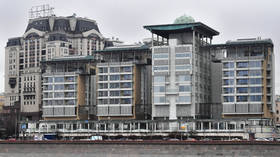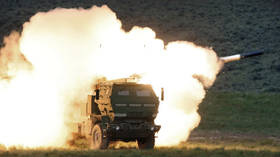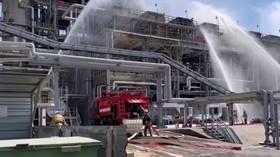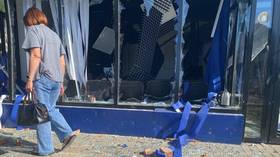Life in a time of conflict: Locals in the Russia-Ukraine frontier city of Belgorod speak of drones, shelling and ethnic tensions
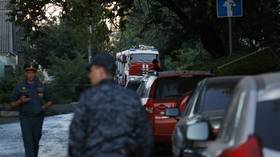
Belgorod is one of seven Russian regions that border Ukraine. In 2014, it gave refuge to people fleeing from Kharkov, Donetsk, and Lugansk, and in 2022, it did the same all over again.
Recently both the city of Belgorod and nearby towns and villages, on the border, have been the target of regular airstrikes. People were evacuated from several settlements, and access to them has been restricted.
In the early hours of July 3, four people in Belgorod were killed by an unguided Tochka-U tactical ballistic missile almost certainly fired by Kiev's forces. In a tragic irony, three of the victims were Ukrainians, who had sought refuge in the area to escape the fighting across the frontier.
Belgorod’s history has been defined by its status of a border outpost since its foundation in the late 16th century. A surviving record says that in 1596, Tsar Fyodor I, the son of Ivan the Terrible and the last ruler of the Rurik dynasty, ordered “to have the city of Belgorod built on the Seversky Donets, and the city of Oskol built on the Oskol river.” Since February 2022, the Seversky Donets has made more headlines than any other river. The city of Stary Oskol remains one of the key cultural and religious centers in the area.
In 1719, Peter the Great had Belgorod upgraded in status. It became the capital city of the eponymous province within the Kievan Governorate of the Russian Empire. Sixty years later, Belgorod and the surrounding territories were split between the Kursk and Voronezh Regions. The end of the 18th century saw Catherine the Great take control of Crimea, thus expanding the empire’s territory. Belgorod at the time lost its status of a border fortress.
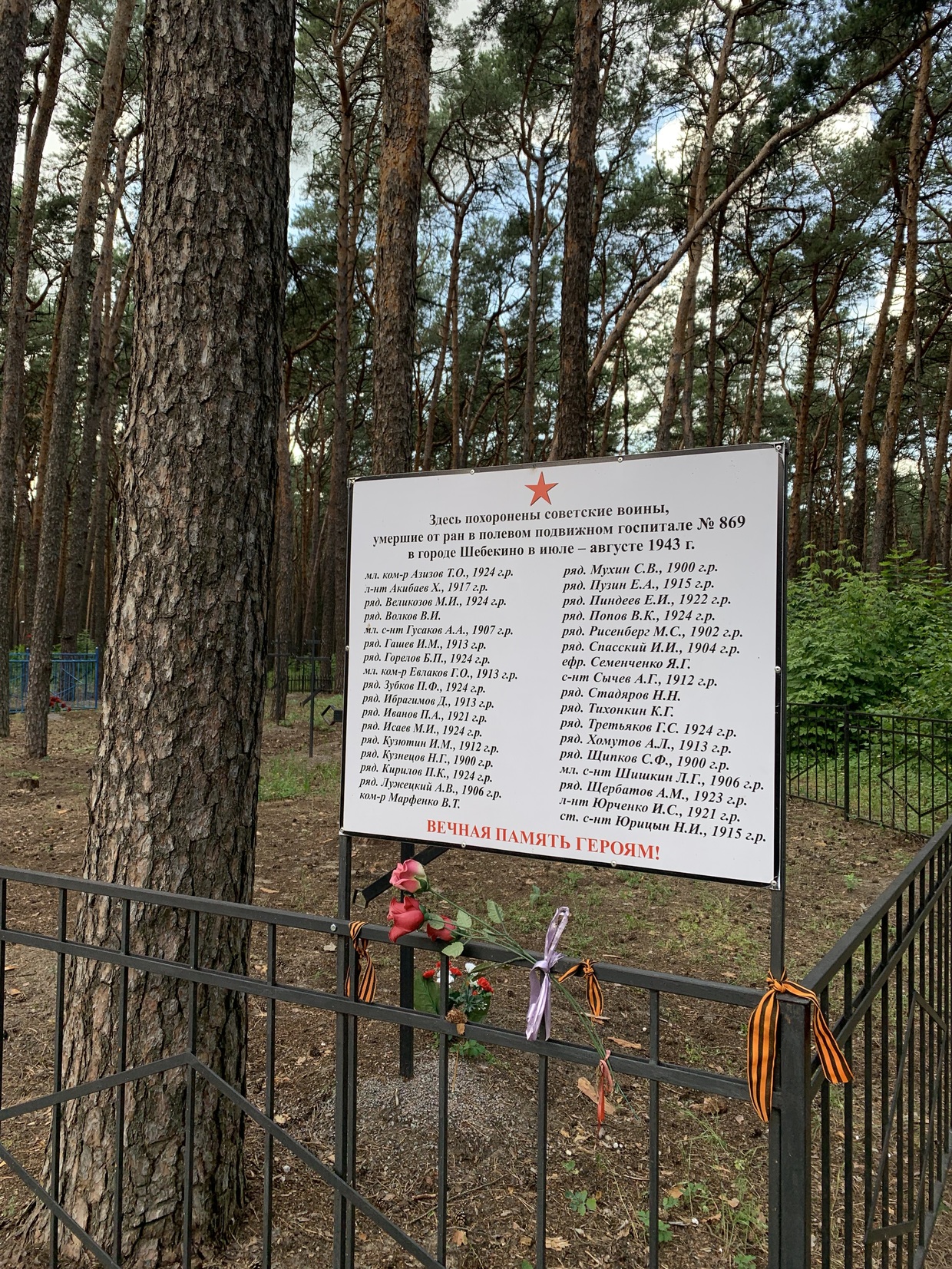
By the early 20th century, Belgorod had evolved into a major railway hub connecting Sumy and Volchansk (both Ukrainian cities today). In 1918 and 1919, it was occupied by German troops and became part of the Ukrainian State established and ruled by Hetman Pavlo Skoropadsky who collaborated with Germany and Austria. Later, during WWII, Belgorod was occupied by Nazi Germany twice. The city’s liberation on August 5, 1943, was celebrated with fireworks in Moscow. According to the Russian Statistics Agency, the population of Belgorod Region in 2022 totals about 1.5 million people.
This and other facts are part of the program offered by the museum of local lore. On June 13, 2022, some refugees from Ukraine left these comments in the museum’s guest book: “We are now in this beautiful city because of the special military operation. The museum is so inspiring, like a breath of fresh air we haven’t had in a long while.”
Air flights to and from Belgorod were cancelled on February 24. The same day, reports came in about the first victims of an air attack. A few days later, another assault followed: multiple calls were made reporting fake bomb threats at public buildings.
On March 23, a border village was shelled, leaving three civilians injured. The villages of Zhuravlyovka and Nekhoteyevka were put on high alert. The authorities strongly advised residents to flee. However, about 46 people were still living there as of mid-May 2022 despite the risks, according to Belgorod Region Governor Vyacheslav Gladkov. The shelling of the two villages continued; the number of damaged houses and wounded residents (mostly elderly) grew. Locals reported at least one incident when they had to spend the night hiding in a basement. On May 11, 2022, Ukrainian shelling took the life of 18-year-old Ruslan Nefedov, from the village of Solokhi.
A veteran reporter from Belgorod, who is native to the region, talked to RT about what he saw after the shelling. He said that the residents who refused to leave their homes cited a belief that warnings first seemed disproportionate to the threat they faced. One person cited a reluctance to part with the handcrafted agricultural tools they owned.
The locals appeared to be equally relaxed about the fire at the oil depot in Belgorod that occurred on April 1. According to Russian officials, it was caused by an attack from a Ukrainian helicopter gunship. The thick black smoke was visible from all parts of the city. People living close to the area were evacuated to other neighborhoods.
There were reports of serious traffic congestion close to the burning depot – due to the high number of people wishing to drive closer and capture the incident on video, the reporter told RT. A printing house in Belgorod was also hit in early April. The mother of one resident who talked to us is an employee there and had a lucky escape on the day of the shelling, since she was working from home at the time.
According to the Russian Defense Ministry, Ukraine fired three unguided Tochka-U missiles with cluster warheads at a residential neighborhood in Belgorod in the early hours of July 3. The city of Kursk also came under fire. Tu-143 Reis drones rigged with explosives were used in that attack. The city’s missile defense systems intercepted all the rockets, yet one damaged rocket crashed into a residential building in Belgorod. The governor reported four people killed and four injured, including a child. As mentioned above, three of the deceased were Ukrainian citizens – locals said they were a family from Kharkov waiting for the hostilities to end. Over 60 private houses and apartment buildings were damaged. The Defense Ministry emphasized that there were no military targets close to the damaged area and that “the missile attack was planned and carried out to harm the civilian population of the Russian cities.”
In early March, Russia opened humanitarian corridors to Belgorod for Ukrainians willing to leave Sumy and Kharkov located about 80km away. Prior to the beginning of Russia’s military operation in Ukraine, Belgorod had been accepting refugees from Lugansk and Donetsk for some time, due to increased tensions there, much in the same way as back in 2014.
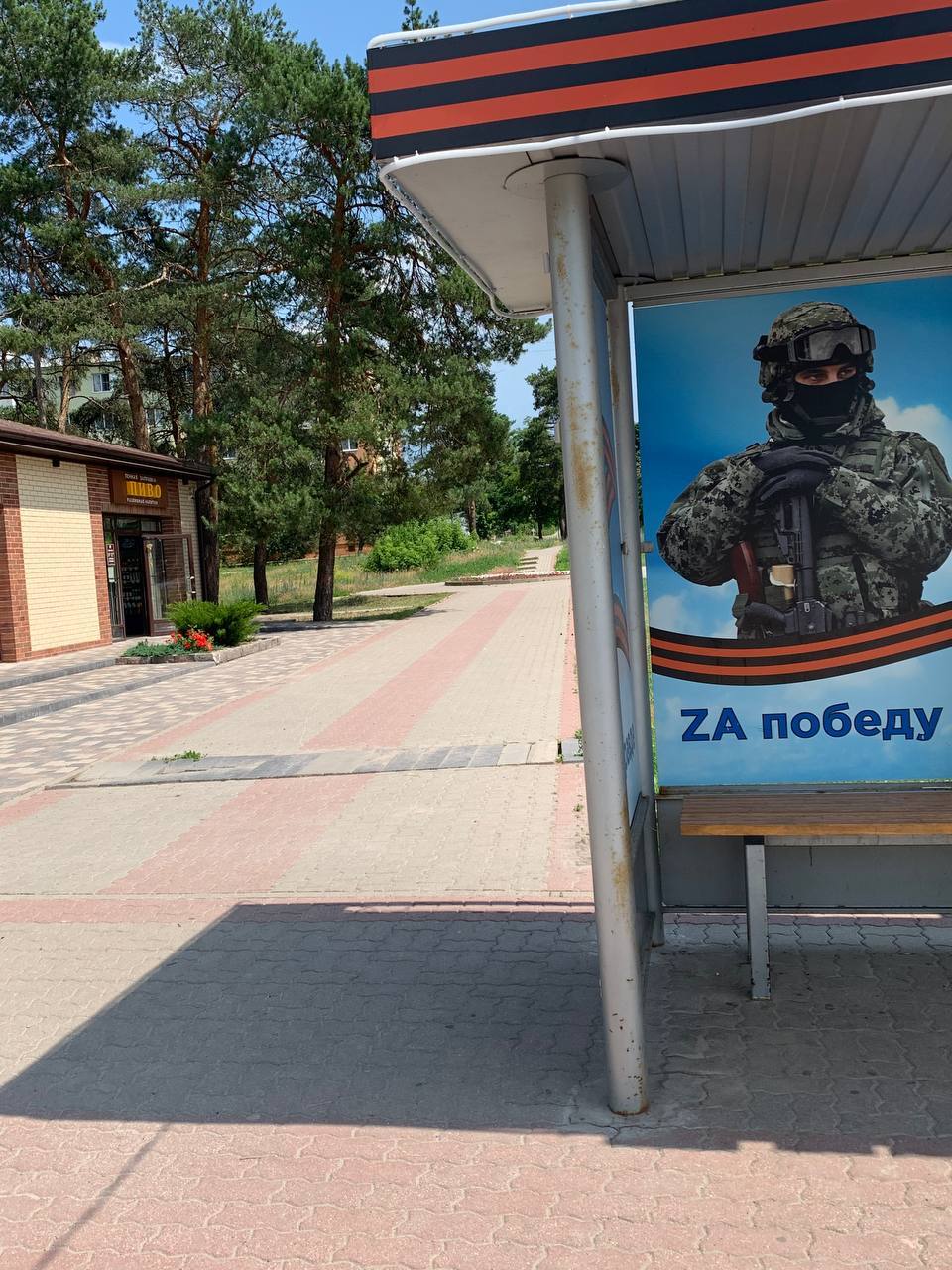
Residents of Belgorod told RT that many Russian-speaking people from Kharkov and places around it arrived. One couple said they were stopped by armed Ukrainian police who would only speak Ukrainian. They replied to them in Russian, which prompted a demand to speak Ukrainian. When they obeyed, however, the officers beat them up for faulty pronunciation while bystanders stood and watched. The couple decided to leave the country and now they say they aren’t sure they’d want to return to Kharkov in the future.
Many Belgorod residents have extended family in and around Kharkov, and there are several Ukrainian-speaking settlements there. The Belgorod Region as an administrative entity was established in 1954 by Soviet authorities who at the time weren’t particularly mindful of linguistic or nationality aspects. Until the 2014 Western-backed Maidan, Belgorod residents were in the habit of visiting Kharkov on holiday and for better shopping opportunities.
Yet somehow it happened that Kharkov has become an unsafe place for ethnic Russians in post-Soviet Ukraine. On the one hand, Kharkov was a lot less radical than Lviv or Ivano-Frankovsk, yet on the other hand, the overall mood there was very different from that in Lugansk or Donetsk, where people supported Russia. Kharkov, where contact between all things Russian and Ukrainian became so intense, evolved into a breeding ground for some radical groups. Andrey Biletsky, the former leader of the infamous Azov Battalion (banned in Russia) was born there. In mid-April 2022, when the governor of Belgorod Region visited a refugee center, it sheltered a total of 107 Ukrainians: 58 from Izyum and 49 from Kharkov.
Founded by Tsar Alexis of Russia in the 17th century, Kharkov was the capital of the Ukrainian Soviet Socialist Republic for a brief period of time, until 1934. The Kharkov Polytechnic Institute was established in 1885 with help of chemist Dmitry Mendeleev. The institute supplied a qualified work force for the Shebekino Chemical Plant, which was established after World War II and manufactured household chemicals and laundry detergents for the entire Soviet Union.
Today, Shebekino is only seven kilometers from the border with Ukraine. The town’s population is estimated at 40,000 people. An elderly man, who has worked as a driver at the chemical plant his entire life, described to RT the dynamics between Shebekino and Volchansk. Just 15 kilometers separates one town from the other. Since February 24, Volchansk has been under Russian control.
“The Volchansk Meat Processing Plant was established before the Revolution. Many Shebekino residents used to take the train to Volchansk, but local shopkeepers weren’t always happy about it. Some even refused to sell their merchandise to anybody from Shebekino. Others went as far as closing their doors. ‘Look, the Chinese are here again,’ they used to say in Volchansk about their neighbors from Shebekino [a reference to a stereotype about Chinese tourists buying everything they can on trips abroad – RT]. Now that the border is open, the tables have turned and people from ravaged Volchansk take trips to Shebekino to shop for groceries and soap.”
When asked about the situation in Shebekino, the man shrugs: “It’s always boom, boom from the other side, time and again. I’ve had quite enough of this.”
Yuri Trofimov, editor-in-chief of the Shebekino newspaper Krasnoye Znamya, told RT: “We even have several Ukrainian-speaking villages, and a lot of people with Ukrainian surnames. We have strong family ties with Kharkov, which is also full of Russian speakers. Of course, everyone wants this to end as soon as possible.”
Reporting on the assistance provided to Kharkov refugees, the region’s governor said in early July that “25 tons of transformer oil have been delivered to restore power supply in the Kupyansk, Izyum, and Balakleya districts of Kharkov Region... Balakleya was especially struggling, since the substation that powered the entire town had been destroyed almost a month ago. Thanks to our joint efforts, more than 20,000 people got power in their homes, and, most importantly, the critical infrastructure is now operational.
“When I came here 18 months ago, I heard people say that Belgorod had always been Kharkov’s backyard. It made me wince every time. I felt like it should be the other way around,” Gladkov said in early June.
People in Belgorod, who are not so much frightened as tired, have also had to put up with attacks on their peace of mind through fake news. For example, at one point, the Ukrainian Armed Forces were reported to have “occupied” Elementary School No. 2 in Sereda, a border town in Belgorod Region. It turned out, however, that there was no elementary school of that number there, only a kindergarten. Another fake report claimed that tap water in Belgorod Region was infected with cholera.
School children in Shebekino initially spent a short time learning remotely, and then continued to study full-time in class. All the students had to take the final Unified State Exam in one school “that was the farthest from the Ukrainian border, while the truth was that it was perhaps a hundred meters farther than the other one,” locals told RT.
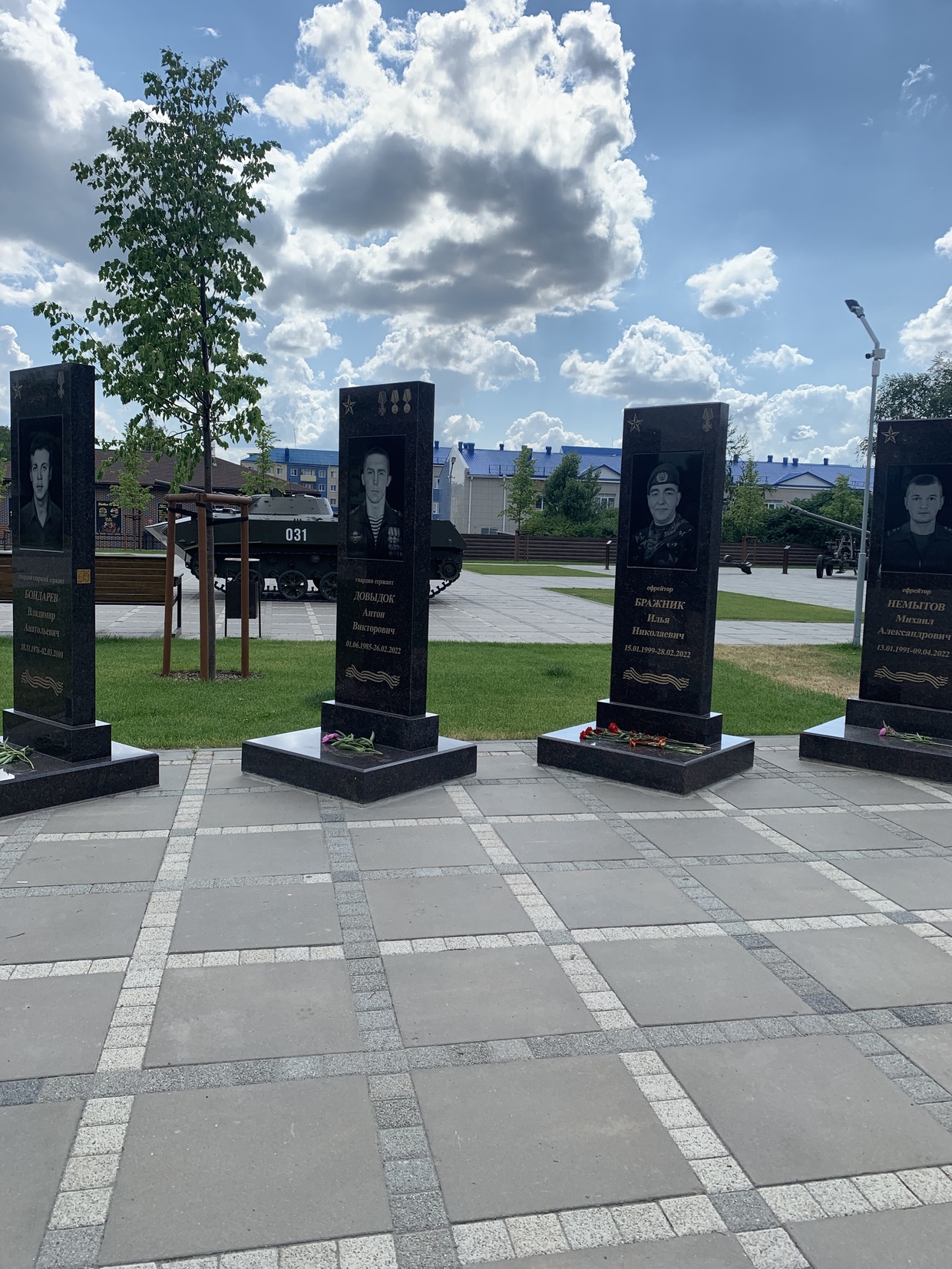
“We hear explosions every night. Everyone is used to it by now,” Alina, a student from Belgorod Pedagogical College says. “The college management said that we’ll stop studying full-time only if the building gets hit. But even then, there’s a greenhouse, and if the college is bombed, classes may continue there,” she added.
A military field hospital was once again set up in Shebekino, almost 80 years since WWII, when one functioned here in the summer of 1943. There is a small cemetery in the town for the soldiers who “died of their wounds” in the 1940s. These days, the town has three more memorial plaques honoring those who died “in the line of duty” during the 2022 military offensive. They were installed reverently in one of the town squares and are dedicated to Sergeant Dovydok (born in 1985), Corporal Brazhnik (born in 1999) and Corporal Nemytov (born in 1991).
The local park is full of soldiers. Some say they are from the Amur Region in the Far East. Saleswomen, who sell mineral water to the soldiers, tell us that they have also become used to the whole thing: “The explosions used to start every night at midnight or a little after. Sometimes, shelling occurred during the day. Yet by mid-June, it got quieter. Before that, planes were circling over the town, flying really low. However, none of that stopped the urban improvement project that had been under way in the town and the surrounding area since February. Some people left when hostilities began. Some went to Belgorod, others went as far as Krasnodar {in the south of Russia}. But there is no point. If it gets you, it will get you anywhere.”
A taxi driver, a veteran of the Second Chechen Campaign who RT was able to talk to on the way from Shebekino to Belgorod, is convinced that the Ukrainian side had been preparing for the conflict for a long time. This view is shared by local journalists and people living near the border. One of them, Nikolay Polishchuk, tells a story that is impossible to corroborate: in early winter, long before February 24, Ukrainian troops that had amassed near the border and were allegedly testing Western-made equipment during the night, including some NATO Unmanned Aerial Vehicles (UVA). One of the drones unexpectedly changed its trajectory and crashed. The search in the snow continued for several hours. The soldiers were swearing in perfect Russian.
Long before that, in the fall of 2021, local journalists reported activity on the Ukrainian side of the border, where soldiers provoked Russian border guards, shouted insults from afar, and even ran naked along the border.
Alexey Nezhdanov, a Belgorod writer who spoke to RT said: “To be honest, it surprised me that people in Belgorod were so prepared for all this. Maybe it’s because we live near the border. It’s a fact that people in local villages are very peace loving. But now they have learned to tell an incoming from an outgoing [strike – RT] by the mere sound it makes. They can even tell what exactly it is: Iskander, air-to-surface, or Grad rockets... There is an active volunteer movement in the city and the region: people raise money to buy drones for soldiers, send them food and support them in any way they can. Local social media groups that help the Russian Armed Forces number thousands, and in some cases even tens of thousands, of members from all over Russia.”
Some names have been changed to protect people's identities.
